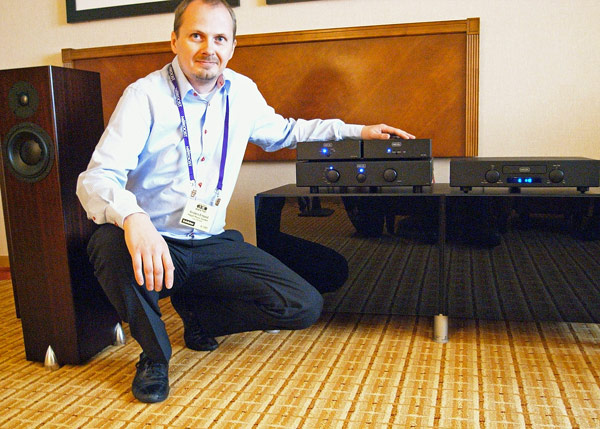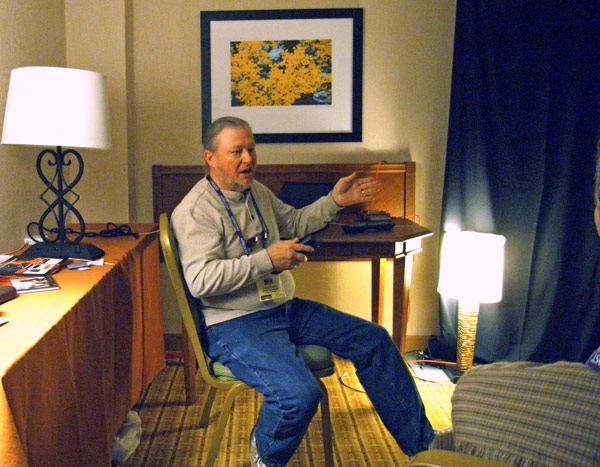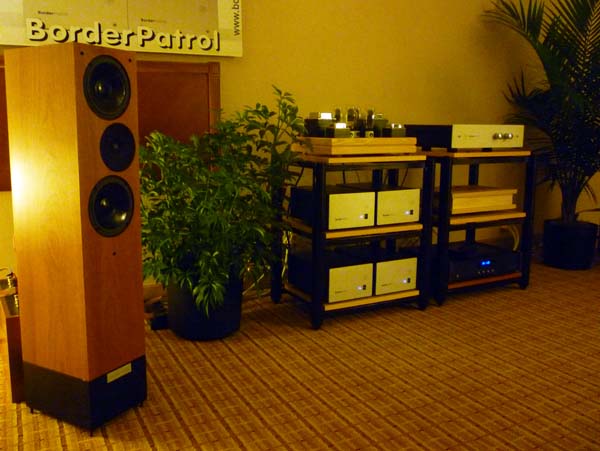LATEST ADDITIONS
DEQX (pronounced Dex)
Politically Incorrect?
BorderPatrol Audio Electronics
Soundsmith’s Hyperion phono cartridge (with cactus needle cantilever!)
Sweet Music from High Water Sound
The Thoress F2A11 integrated amplifier
Entirely hand-built by Reinhard Thoress, the amplifier uses NOS Siemens F2A11 power tetrodes, which High Water Sound's Jeffrey Catalano explained, were popular in the Klangfilm cinema amplifiers of post-war Germany. Three line-level inputs are selectable by a rear-panel rotary switch, while separate volume controls for each channel can be adjusted using carefully matched high-grade rotary potentiometers. Why? I don’t know why, but it’s cool.
According to Catalano, the sound of the F2A11 is crystal clear. It “just cuts through all the BS.” There you go. The Thoress F2A11 looks like some kind of a tank, delivers about 6Wpc, and costs $8000.
Ayre's QA-9 A/D Converter
Wavelength Tubes & Digital
Clarus Cables
Joe was still fine-tuning the systemB&W 803 Diamond speakers, McIntosh MCD100 CD player/DAC and McIntosh monoblocks, and a Tributaries power manager when I visited the Clarus roombut I kidded him that the only non-Clarus cable in the system was the USB link from the laptop to the McIntosh MCD100.










